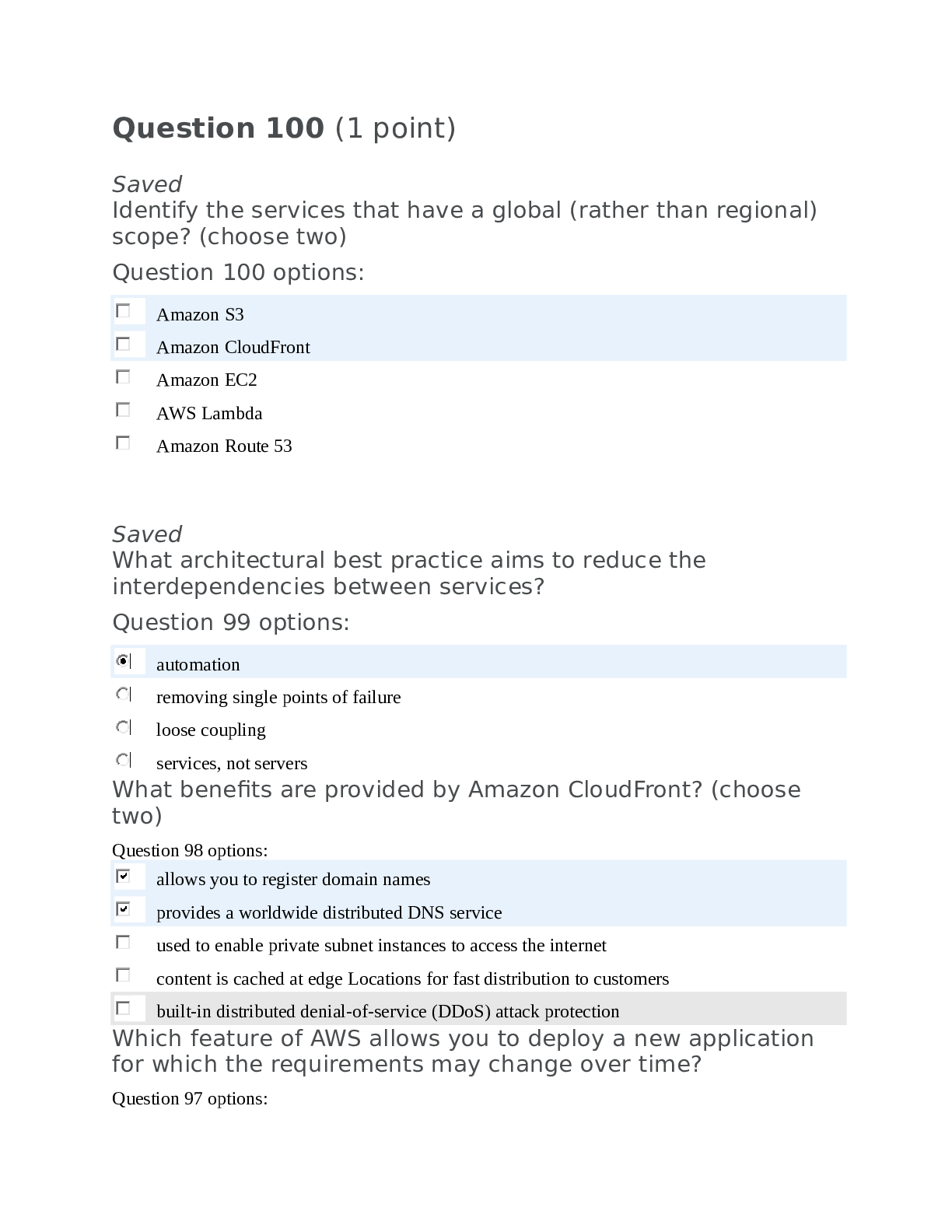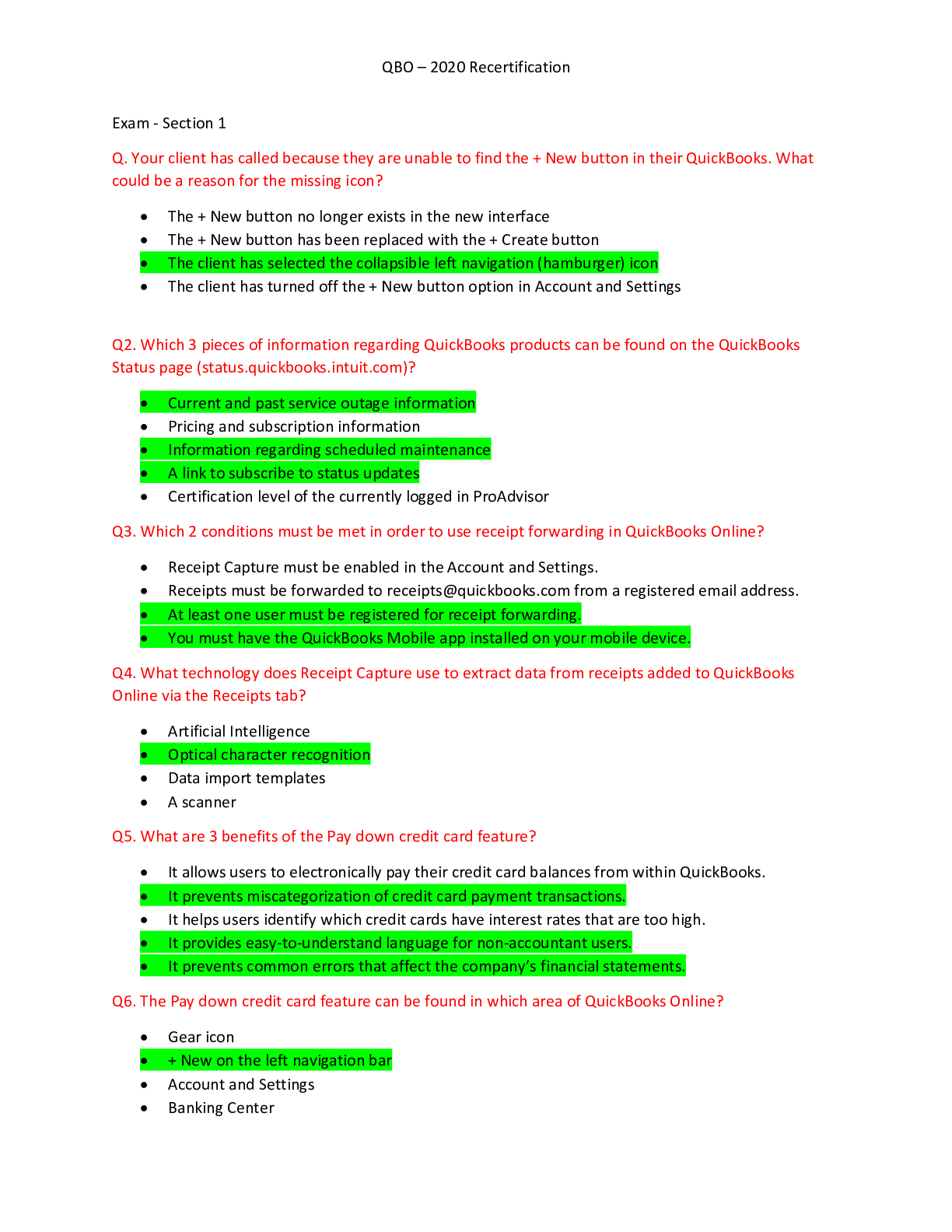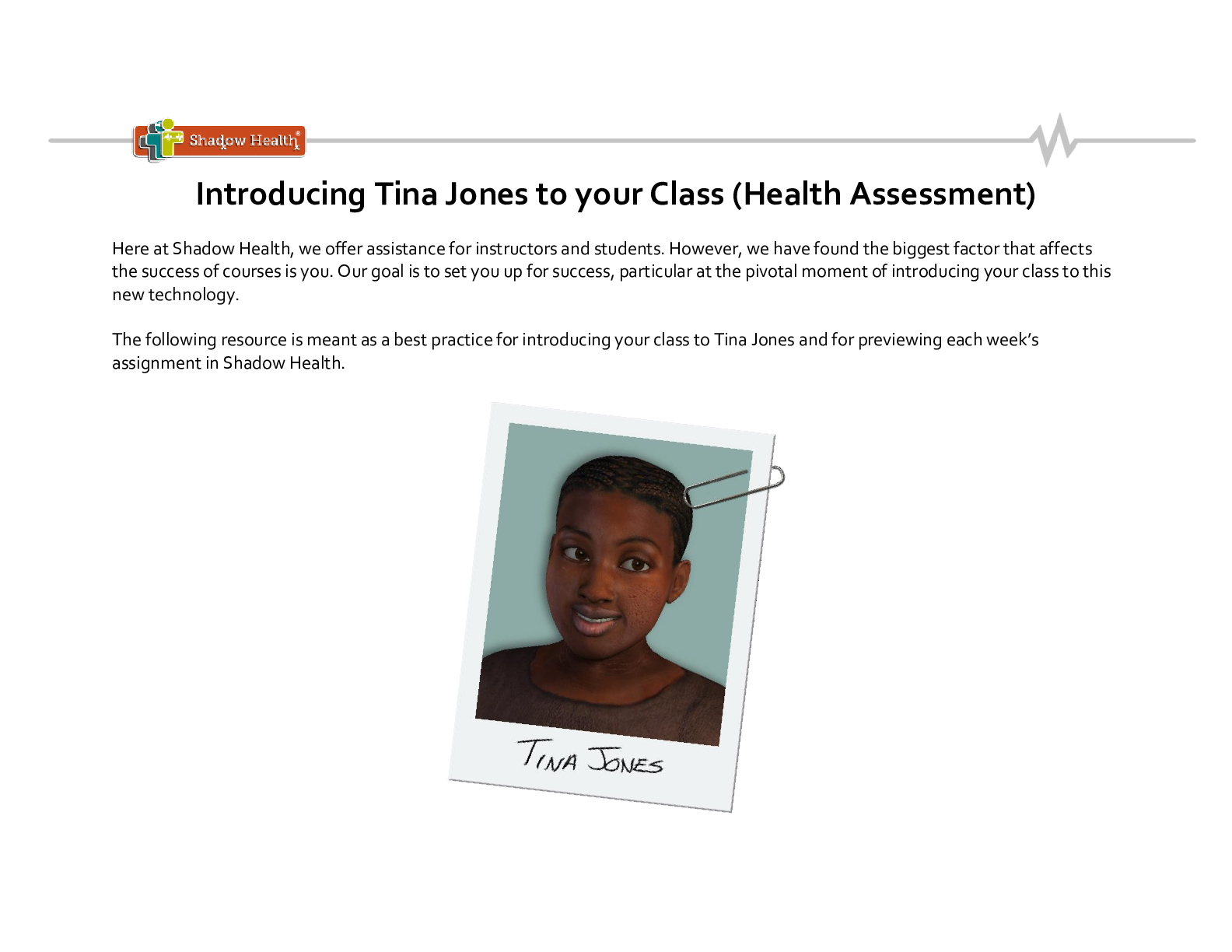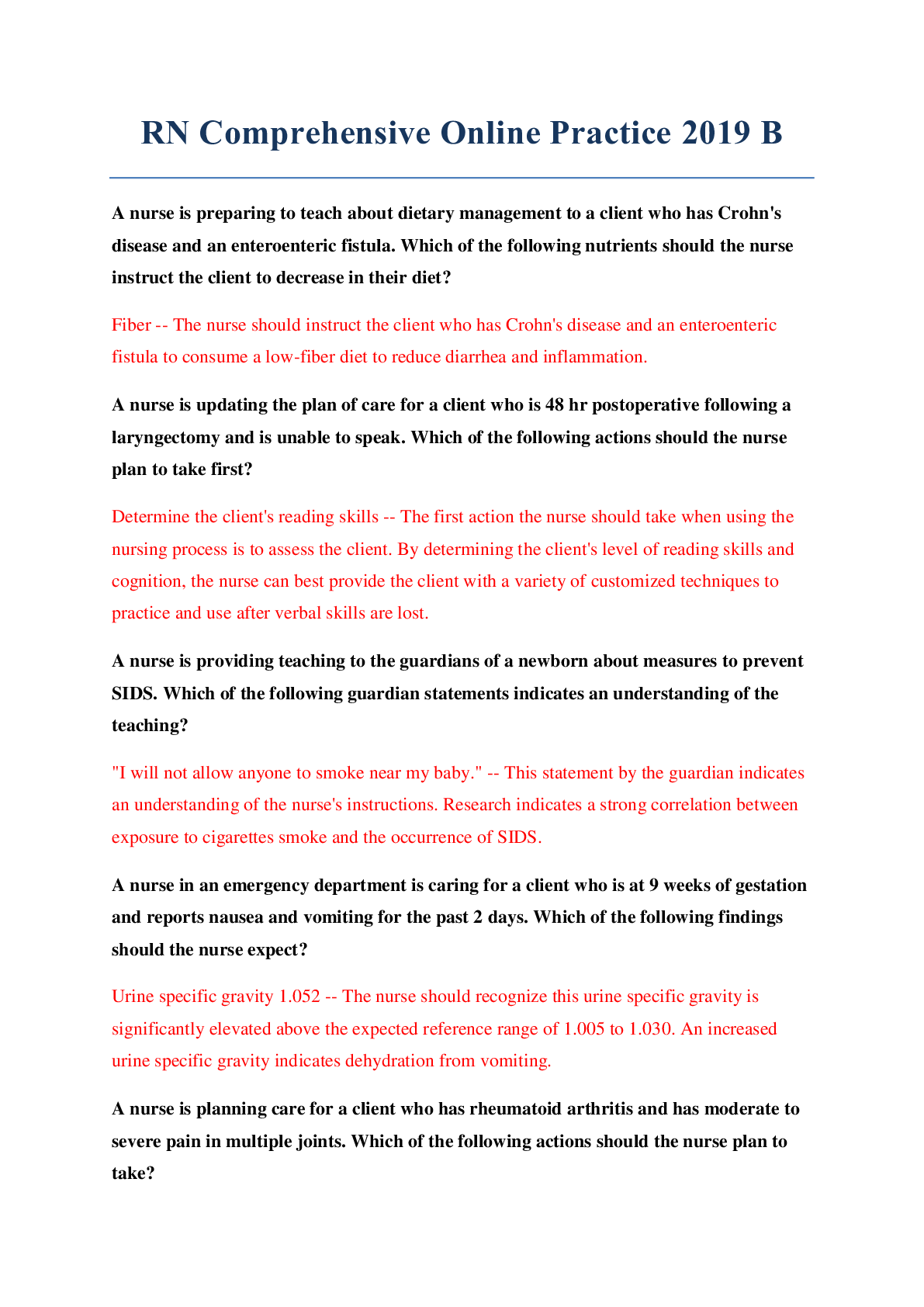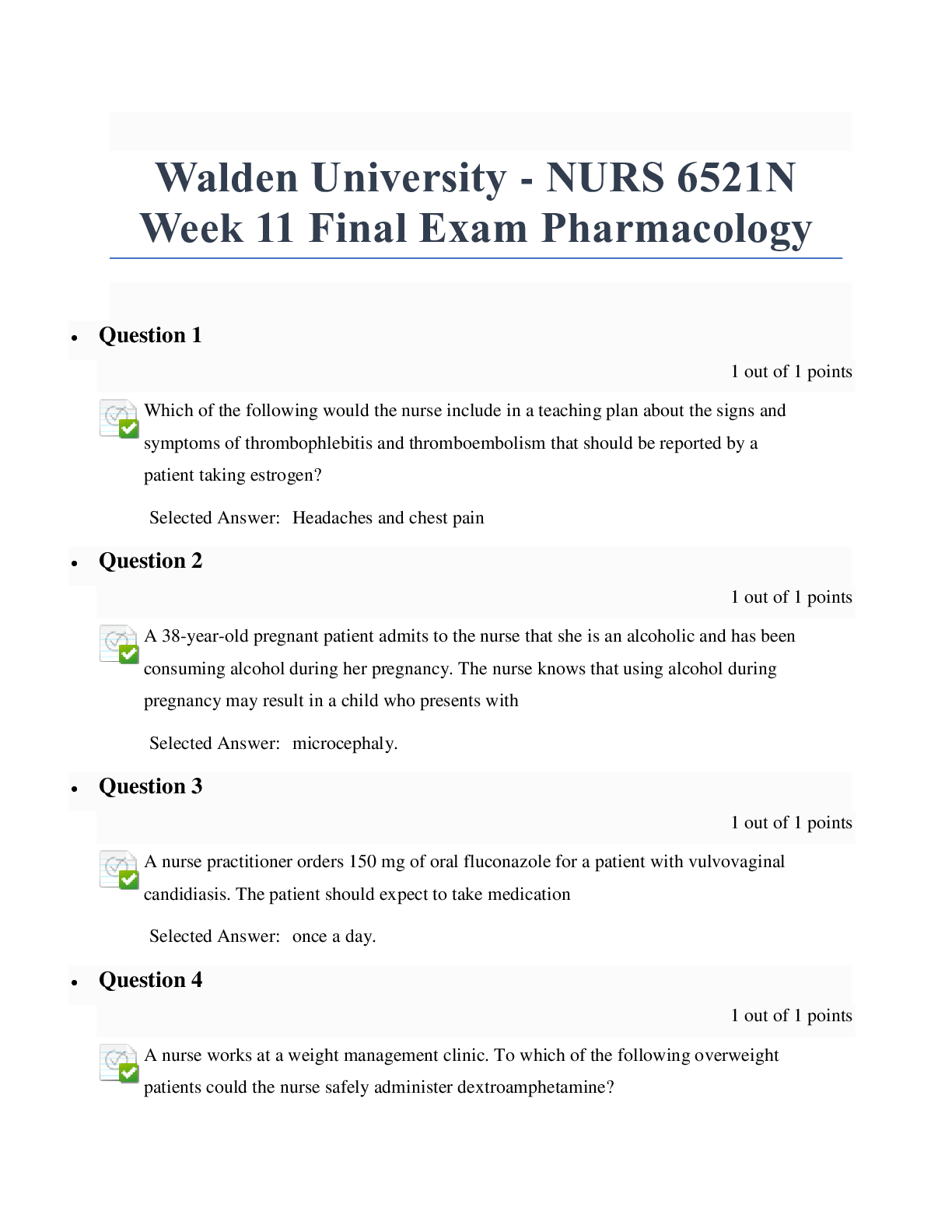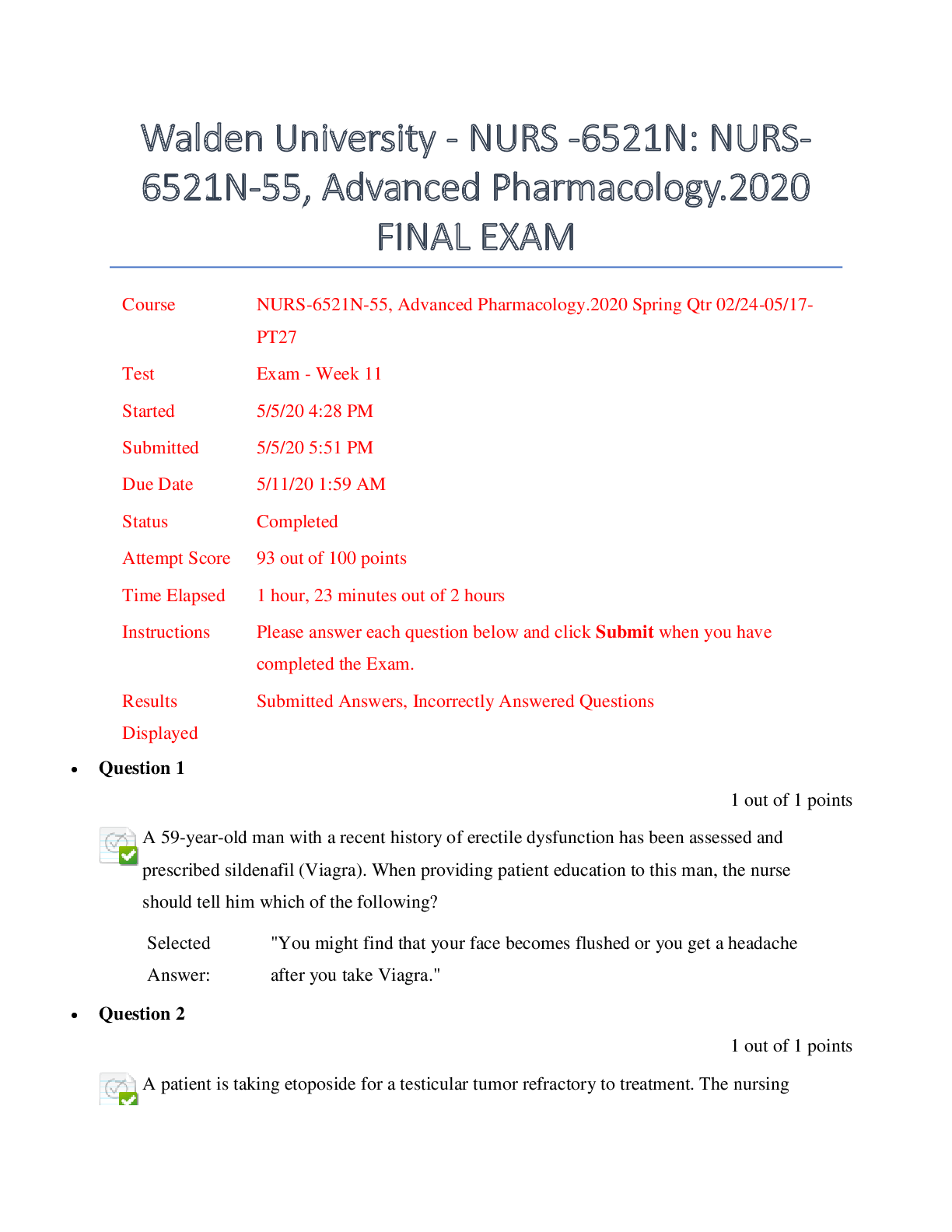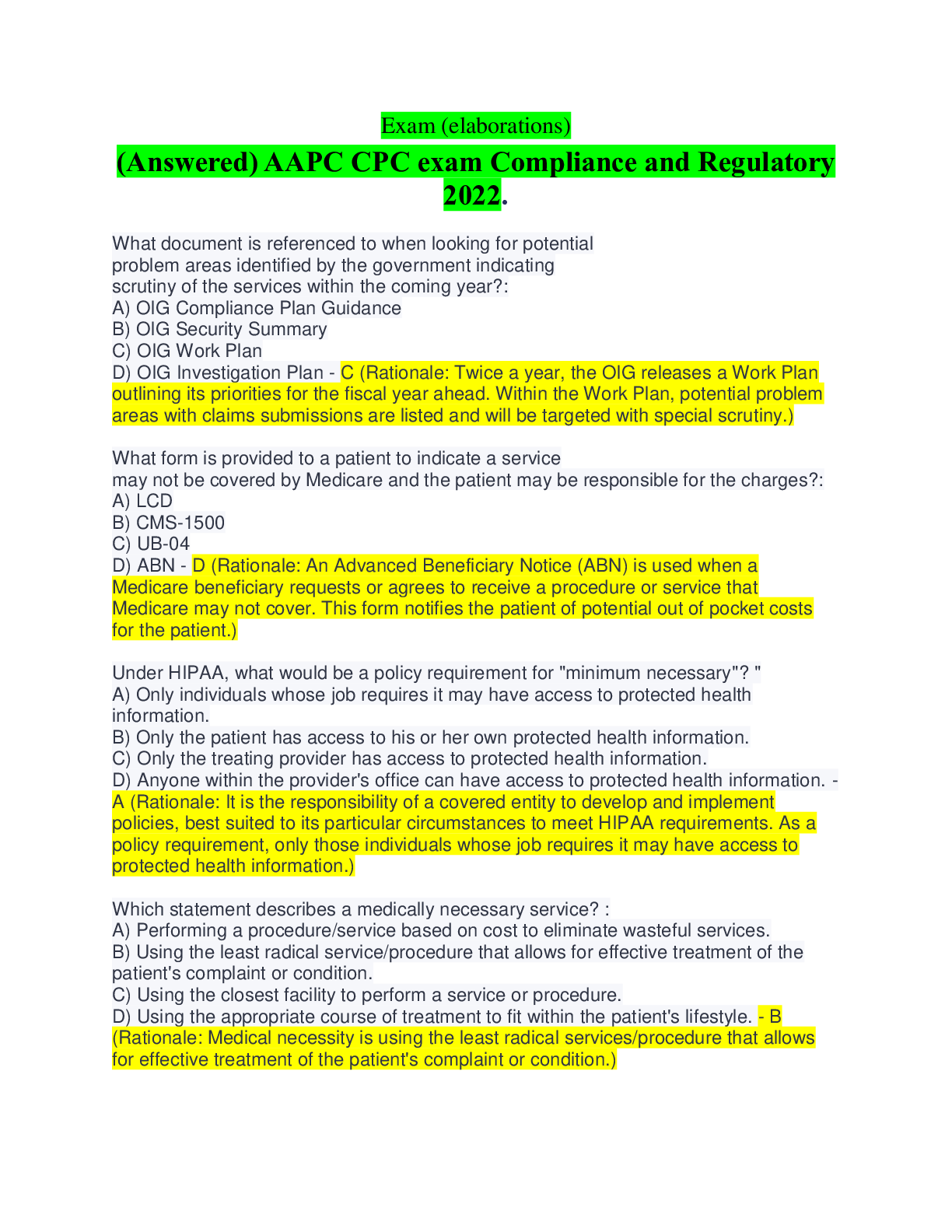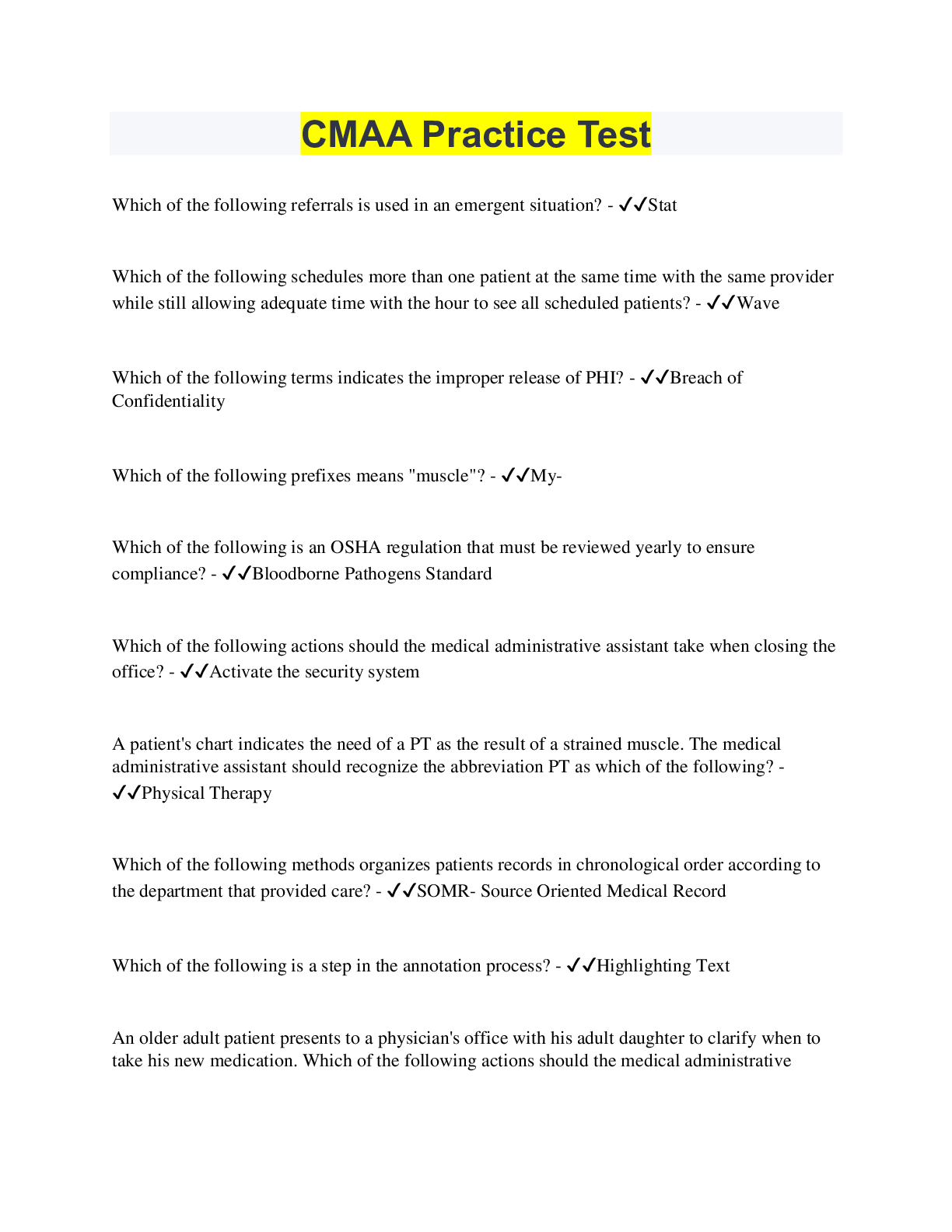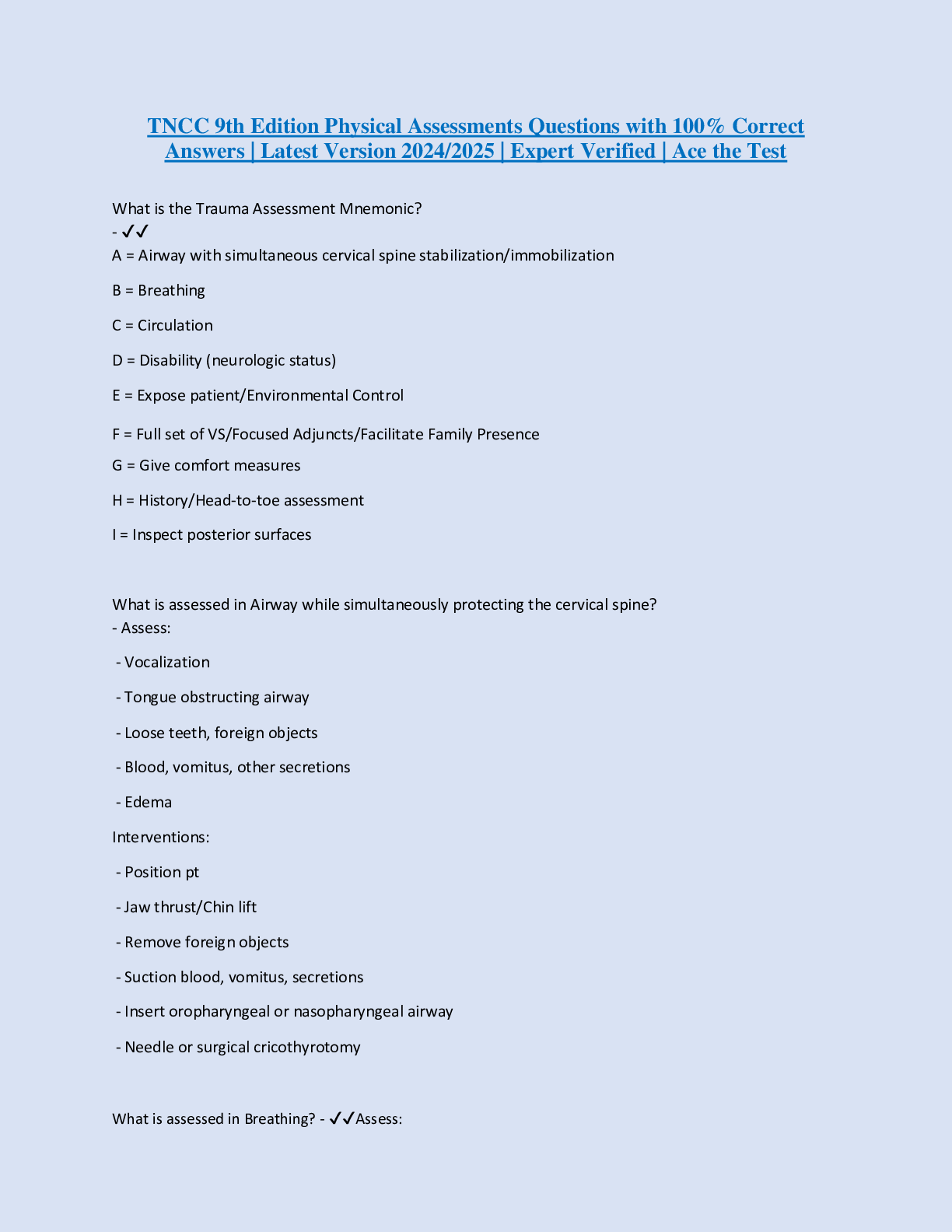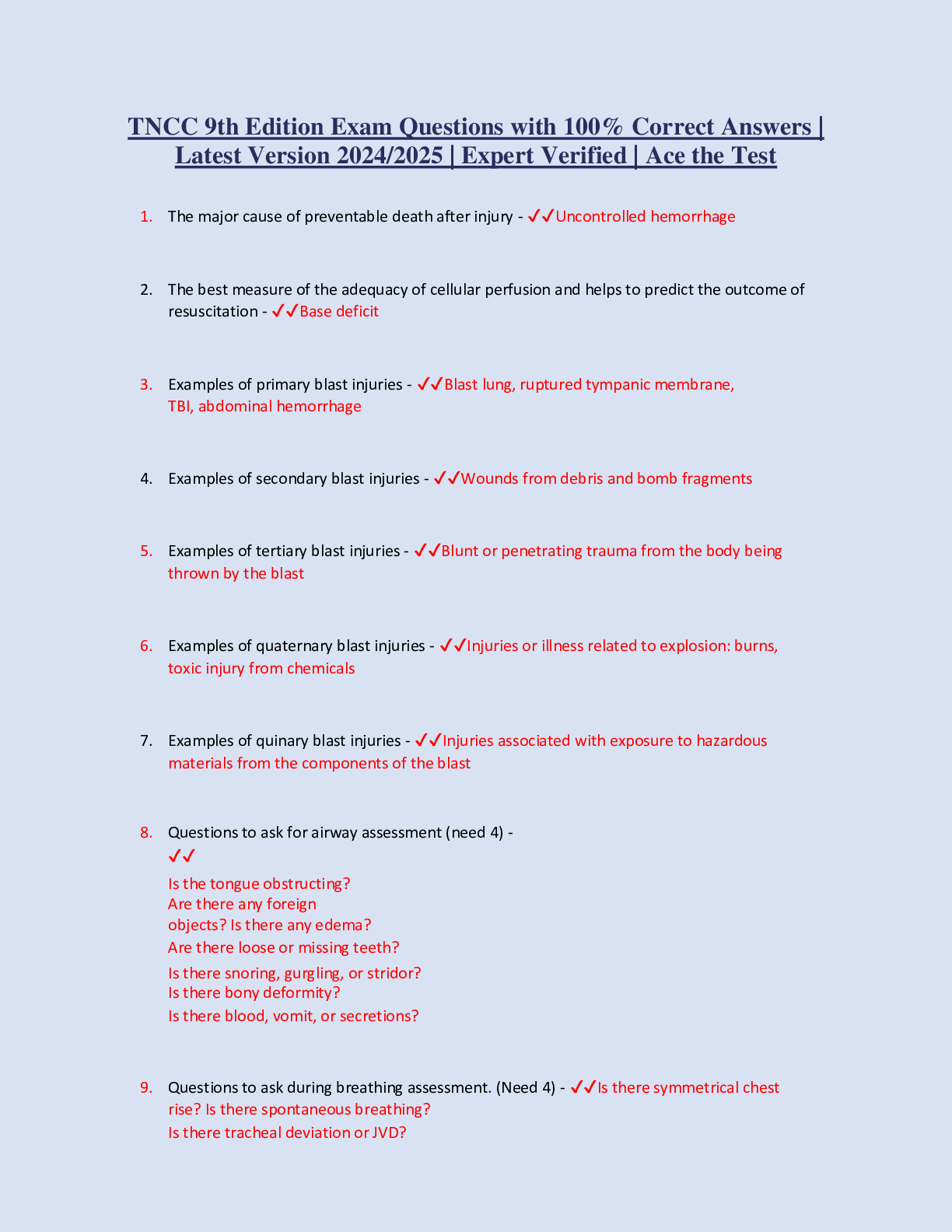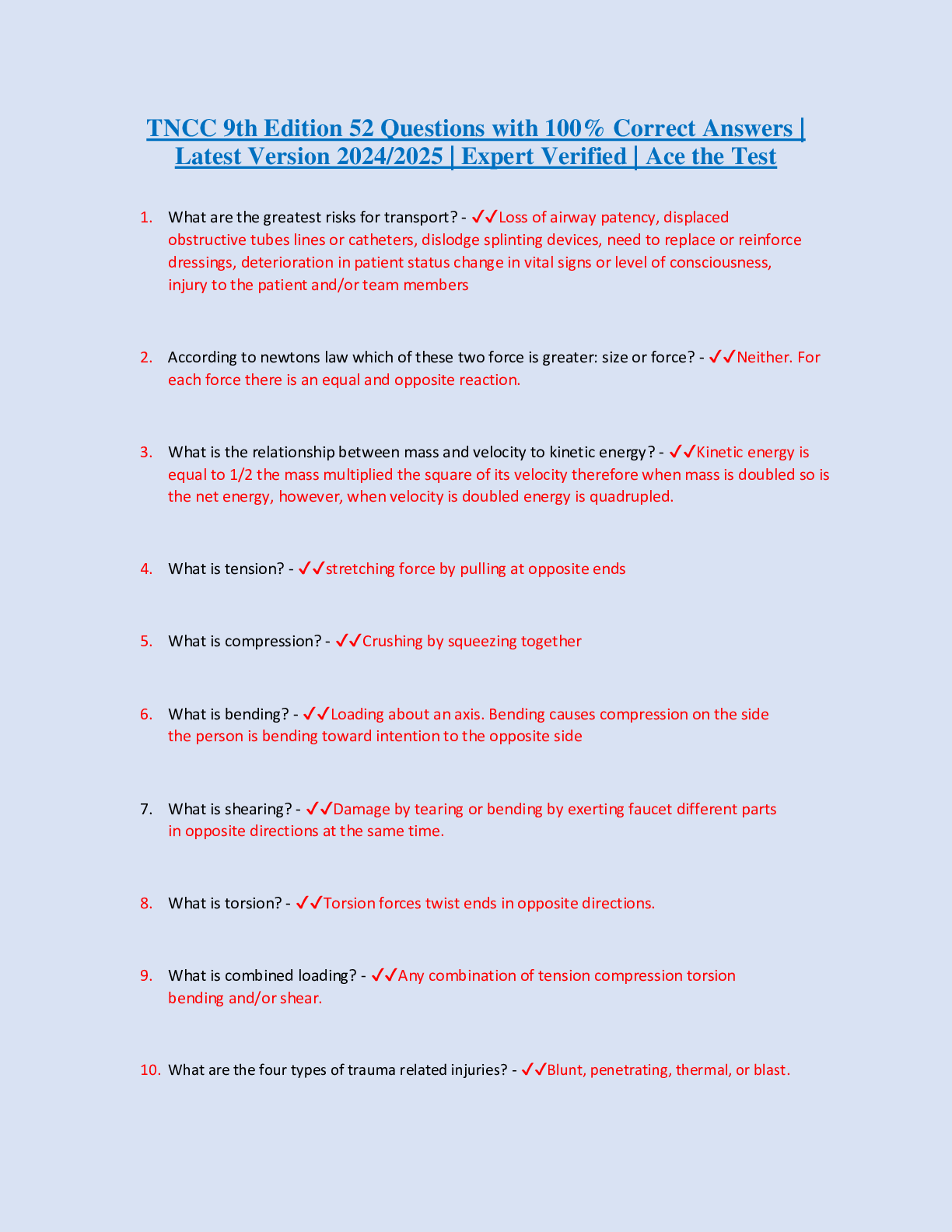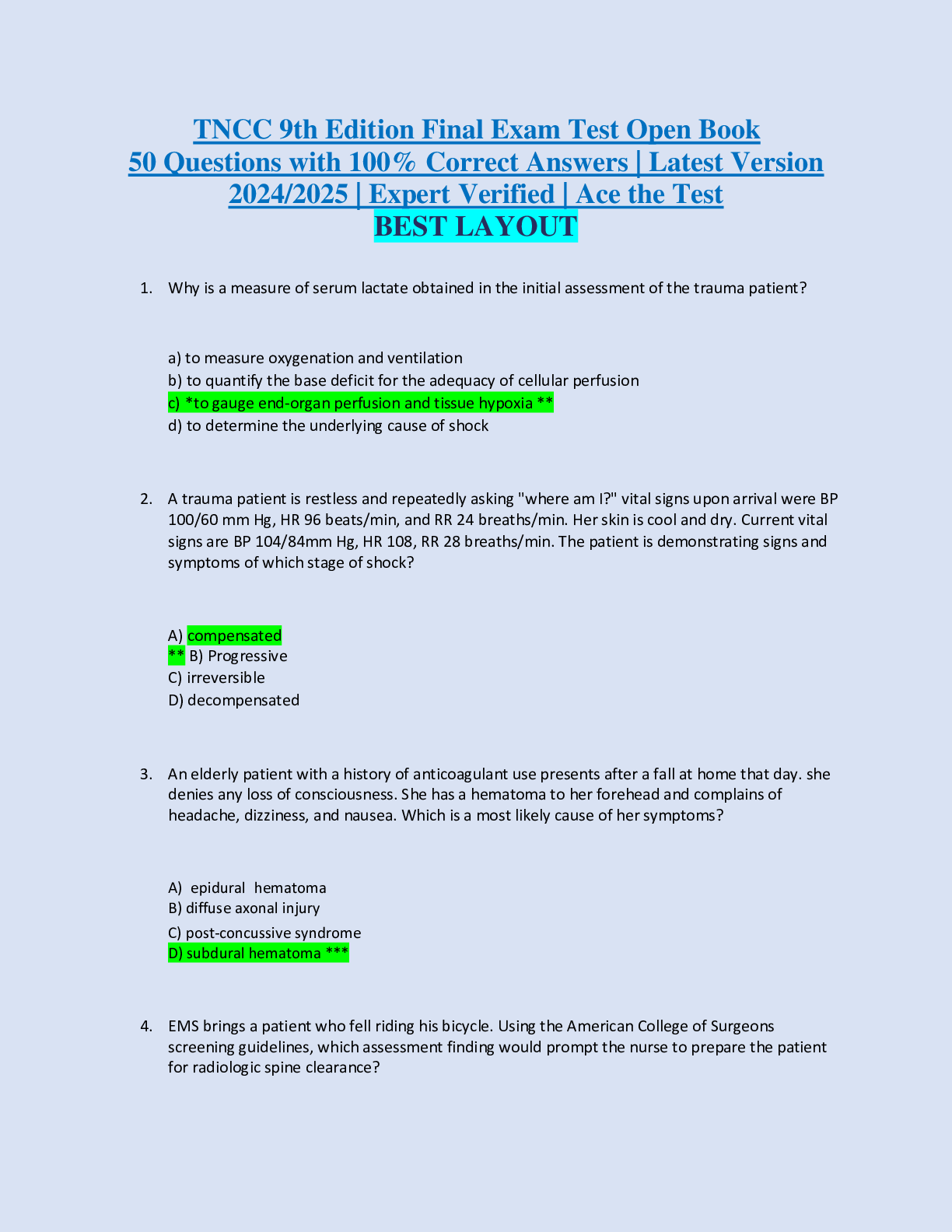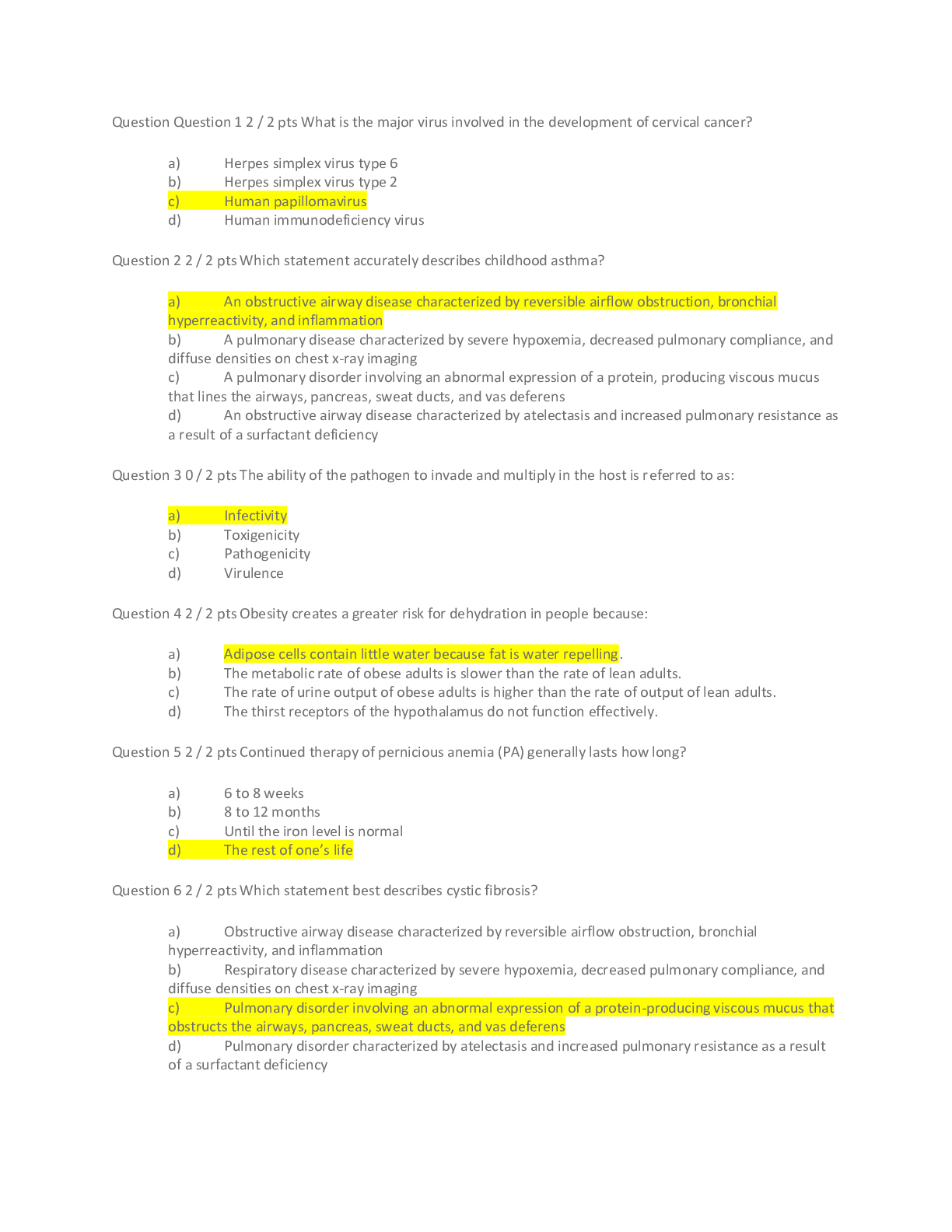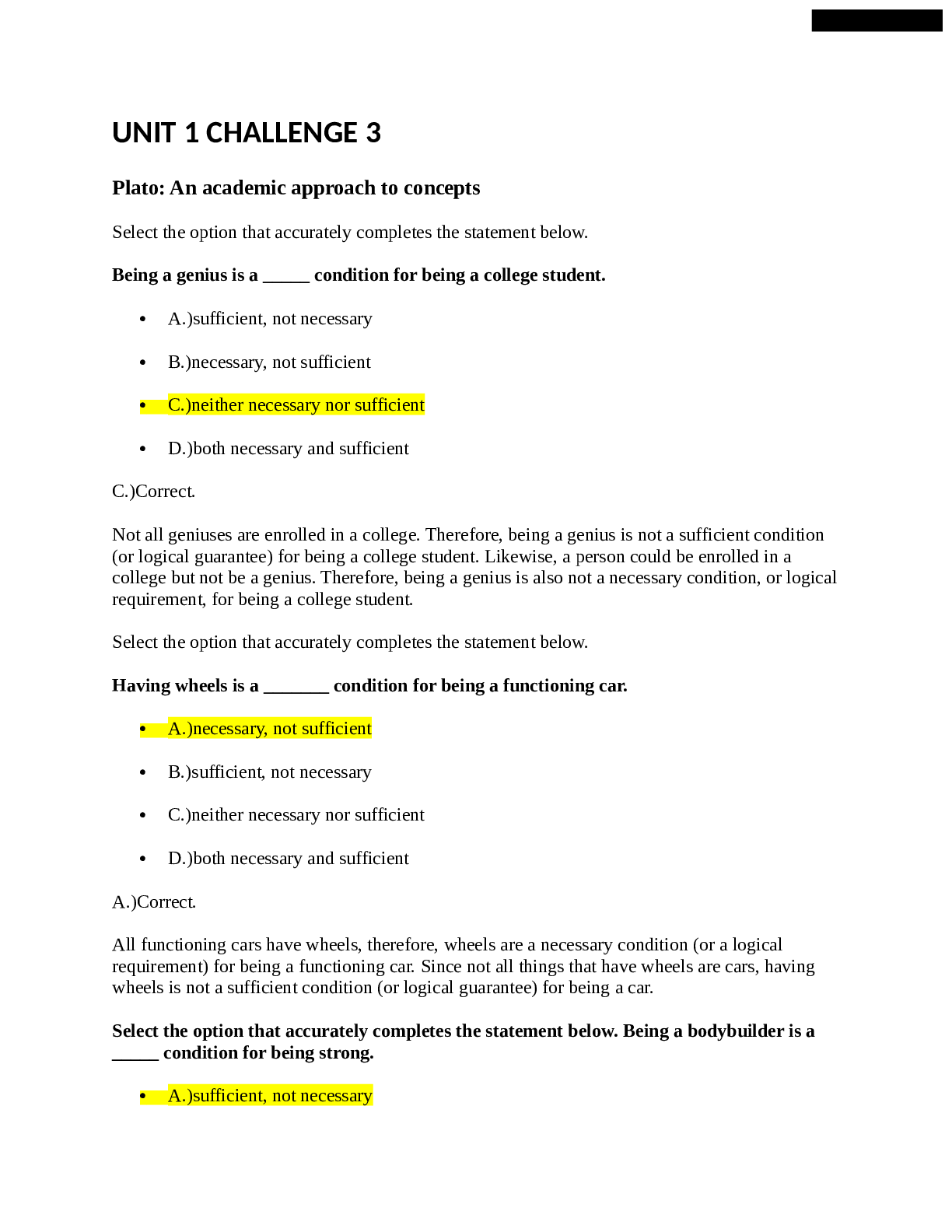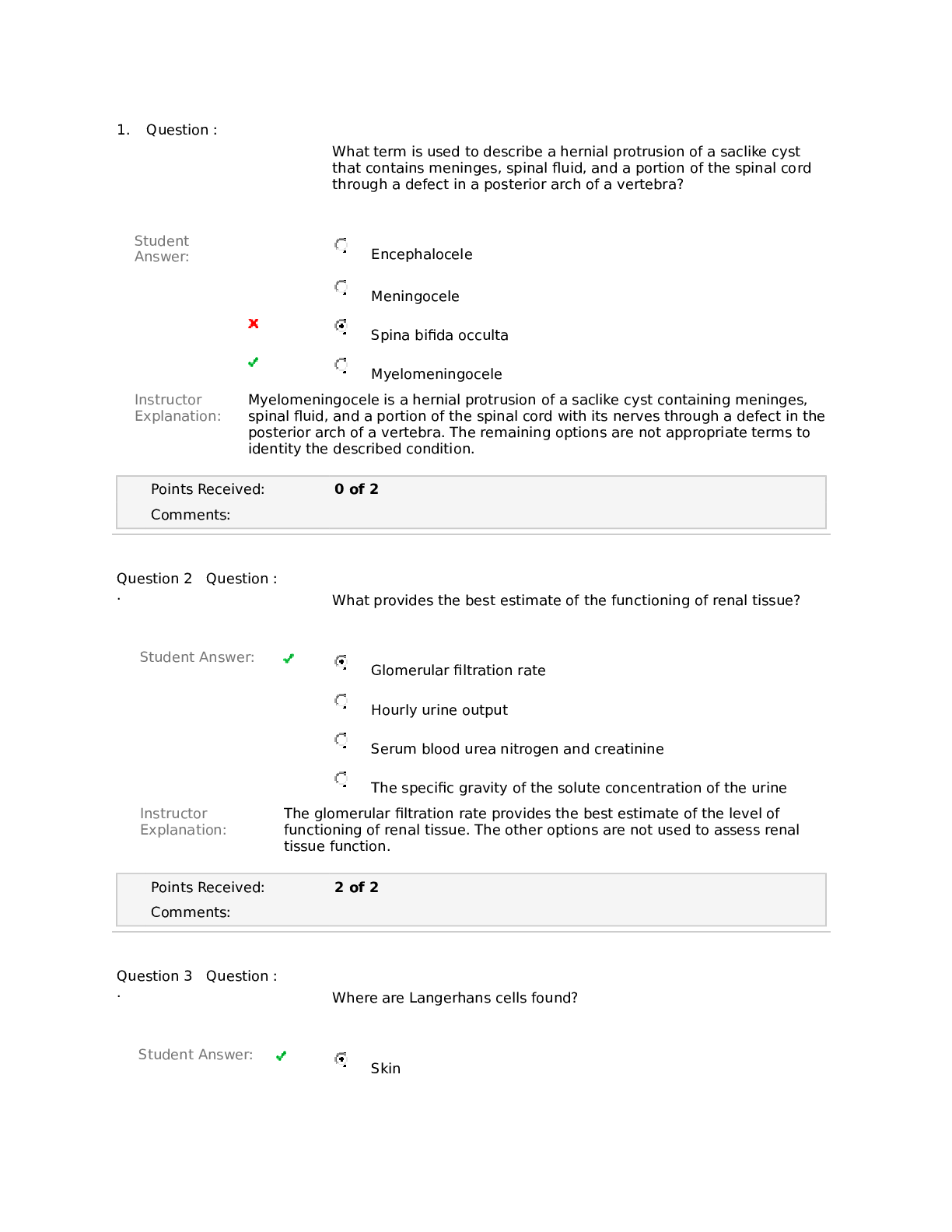South University, Savannah - PATHOPHSIO NSG5003Week 1 Quiz Patho.
Document Content and Description Below
PATHOPHSIO NSG5003Week 1 Quiz Patho Grade Details - All Questions Question 1. Question : Passive transport is best described by which statement? Student Answer: Being driven by osmosis, hydro... static pressure, and diffusion Involving receptors that can bind with substances being transported Being capable of transporting macromolecules Requiring energy generated by the cell Question 2. Question : Why is it possible for potassium to diffuse easily into and out of cells? Student Answer: Potassium has a greater concentration in the ICF. Sodium has a greater concentration in the ECF. The resting plasma membrane is more permeable to potassium. An excess of anions is inside the cell. Question 3. Question : In hypoxic injury, sodium enters the cell and causes swelling because: Student Answer: The cell membrane permeability increases for sodium during periods of hypoxia. ATP is insufficient to maintain the pump that keeps sodium out of the cell. The lactic acid produced by the hypoxia binds with sodium in the cell. Sodium cannot be transported to the cell membrane during hypoxia. Question 4. Question : Lead poisoning affects the nervous system by: Student Answer: Interfering with the function of neurotransmitters Inhibiting the production of myelin around nerves Increasing the resting membrane potential Altering the transport of potassium into the nerves Question 5. Question : During acidosis, the body compensates for the increase in serum hydrogen ions by shifting hydrogen ions into the cell in exchange for which electrolyte? Student Answer: Oxygen Sodium Potassium Magnesium Question 6. Question : Which statement is a description of the characteristics of apoptosis? Student Answer: Programmed cell death of scattered, single cells Swelling of the nucleus and cytoplasm Unpredictable patterns of cell death Cause of benign malignancies Question 7. Question : What is the sequence of steps in the development of a digestive enzyme by the pancreas cells from the initial transcription to the release from the cells? Student Answer: The enzyme is transcribed from DNA by ribonucleic acid (RNA) in the nucleus, proceeds to the ribosomes for synthesis, and is transported in secretory vesicles to the cell membrane. The enzyme is transcribed from RNA by DNA in the nucleus, proceeds to the lysosomes for synthesis, and is transported in an encapsulated membrane to the cell membrane. The enzyme is transcribed by the mitochondria in the nucleus, proceeds to the ribosomes for synthesis, and is transported in a cytoskeleton to the cell membrane. The enzyme is transcribed from DNA by RNA in the nucleus, proceeds to the Golgi complex for synthesis, and is transported in the cytosol to the cell membrane. Question 8. Question : A muscle cell possesses which specialized function? Student Answer: Movement Conductivity Secretion Respiration Question 9. Question : Vomiting-induced metabolic alkalosis, resulting in the loss of chloride, causes: Student Answer: Retained sodium to bind with the chloride Hydrogen to move into the cell and exchange with potassium to maintain the cation balance Retention of bicarbonate to maintain the anion balance Hypoventilation to compensate for the metabolic alkalosis Question 10. Question : Causes of hyperkalemia include: Student Answer: Hyperparathyroidism and malnutrition Vomiting and diarrhea Renal failure and Addison’s disease Hyperaldosteronism and Cushing’s disease Question 11. Question : A patient who has diarrhea receives a 3% saline solution intravenously to replace the sodium and chloride lost in the stool. What effect will this fluid replacement have on cells? Student Answer: Cells become hydrated. Cells swell or burst. Cells shrink. Cells divide. Question 12. Question : The abnormal proliferation of cells in response to excessive hormonal stimulation is called: Student Answer: Dysplasia Pathologic dysplasia Hyperplasia Pathologic hyperplasia Question 13. Question : Thirst activates osmoreceptors by an increase of what in blood plasma? Student Answer: Antidiuretic hormone Aldosterone Hydrostatic pressure Osmotic pressure Question 14. Question : Which of the following is an example of compensatory hyperplasia? Student Answer: Hepatic cells increase cell division after part of the liver is excised. Skeletal muscle cells atrophy as a result of paralysis. The heart muscle enlarges as a result of hypertension. The size of the uterus increases during pregnancy. Question 15. Question : A major determinant of the resting membrane potential necessary for the transmission of nerve impulses is the ratio between: Student Answer: Intracellular and extracellular Na+ Intracellular and extracellular K+ Intracellular Na+ and extracellular K+ Intracellular K+ and extracellular Na+ Question 16. Question : Which type of cell adaptation occurs when normal columnar ciliated epithelial cells of the bronchial lining have been replaced by stratified squamous epithelial cells? Student Answer: Hyperplasia Metaplasia Dysplasia Anaplasia Question 17. Question : Understanding the various steps of proteolytic cascades, such as caspase-mediated apoptosis and complement cascades, may be useful in designing drug therapy for which human diseases? Student Answer: Cardiac and vascular disorders Autoimmune and malignant disorders Gastrointestinal and renal disorders Endocrine and gastrointestinal disorders Question 18. Question : The fluid mosaic model explains: Student Answer: How the cell membrane functions Why our bodies appear to be solid How tissue is differentiated How fluid moves between the intracellular and extracellular compartments Question 19. Question : The cellular uptake of the nutrient cholesterol depends on which process? Student Answer: Receptor-mediated exocytosis Antiport system Receptor-mediated endocytosis Passive transport Question 20. Question : Which statement best describes the cellular function of metabolic absorption? Student Answer: Cells can produce proteins. Cells can secrete digestive enzymes. Cells can take in and use nutrients. Cells can synthesize fats. [Show More]
Last updated: 1 year ago
Preview 1 out of 9 pages

Reviews( 0 )
Document information
Connected school, study & course
About the document
Uploaded On
Jul 13, 2020
Number of pages
9
Written in
Additional information
This document has been written for:
Uploaded
Jul 13, 2020
Downloads
0
Views
37


